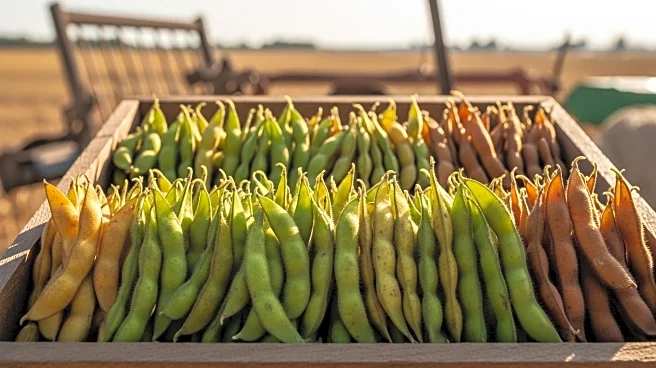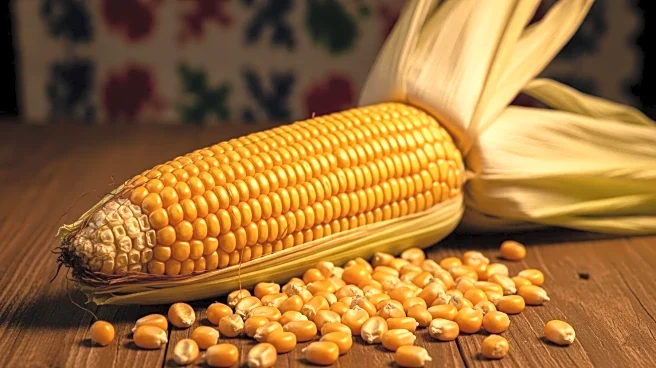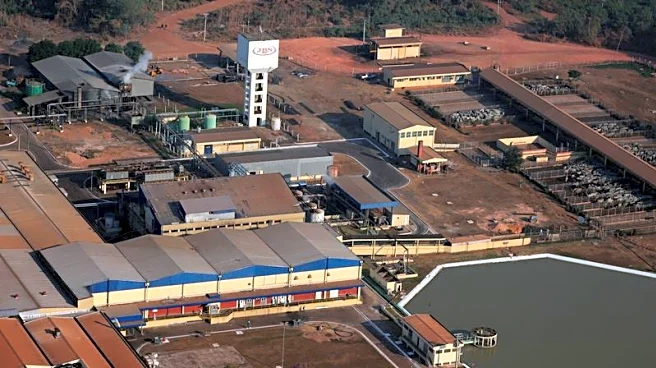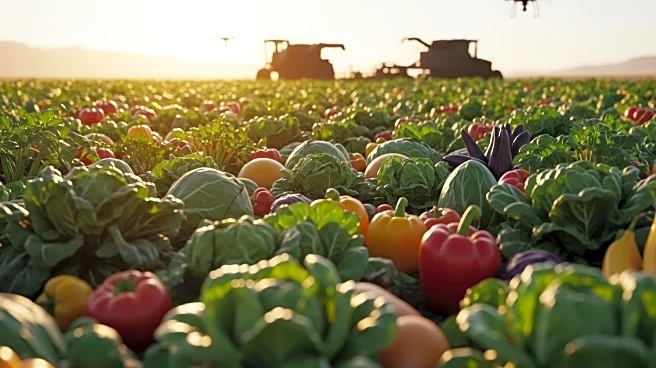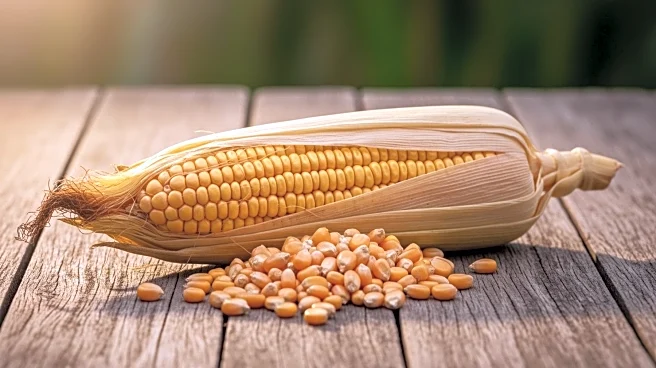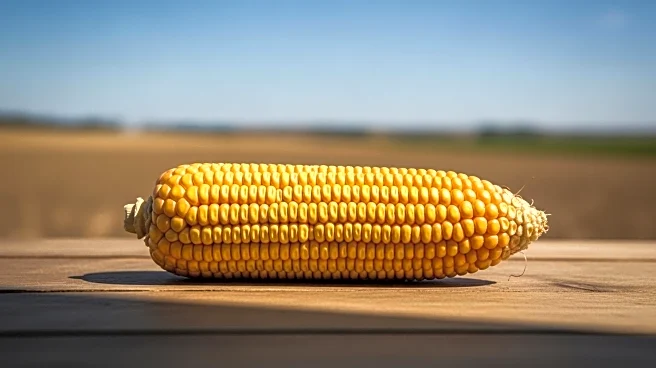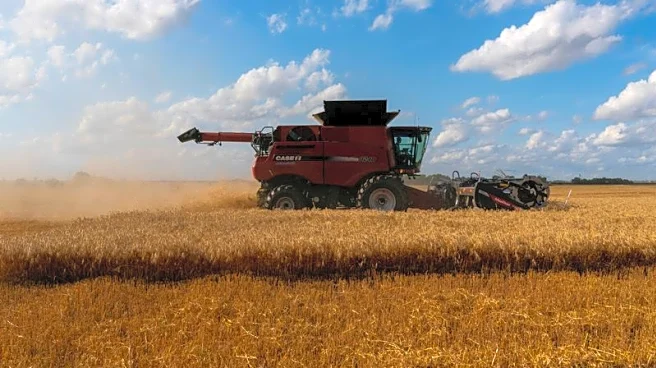What is the story about?
What's Happening?
The USDA's September Crop Report has indicated a slight reduction in U.S. corn yield estimates, now projected at 186.7 bushels per acre. This adjustment comes alongside an unexpected increase in acreage, up by 1.4 million acres compared to previous estimates. Despite these changes, the report forecasts a rise in U.S. corn exports by 100 million bushels, contributing to a positive market outlook. The agricultural markets have shown strong momentum, with corn prices closing at $430, marking a second consecutive week of gains. Soybeans have also experienced a 19-cent rise, reflecting favorable market conditions. However, early harvests in states like North Dakota have reported lower yields due to adverse conditions such as frost, drought, and disease pressure.
Why It's Important?
The USDA's revised corn yield estimates and increased export forecasts are significant for the U.S. agricultural sector, particularly as they influence market dynamics and pricing. The rise in corn prices and export expectations could benefit U.S. farmers and agribusinesses by enhancing revenue opportunities. However, the lower yields reported in some states highlight ongoing challenges such as climate variability and disease, which could impact overall production and profitability. The broader implications for global commodity markets are also noteworthy, as U.S. corn plays a critical role in international trade. The potential for a La Nina weather pattern in 2026, which could bring drought conditions, adds another layer of complexity to future agricultural planning and market stability.
What's Next?
Looking ahead, the agricultural sector must prepare for potential weather-related disruptions, particularly the anticipated La Nina conditions that could affect crop yields in both the U.S. and South America. Farmers and agribusinesses are advised to stay informed and develop strategies to mitigate risks associated with climate variability. The USDA's ongoing monitoring and reporting will be crucial in providing updated forecasts and guidance. Additionally, market participants will be closely watching for any policy changes or incentives that could further influence agricultural production and trade dynamics.
AI Generated Content
Do you find this article useful?


